

Ginger is a delightful aromatic plant grown for its rhizome or root.
Key ginger facts:
Latin name: Zingiber officinale
Family: Zingiberaceae
Type: spice and medicinal
Height: 6 feet (1m 80)
Exposure: sunny to part shade
Soil: light and well-drained
Planting: spring – Harvest: fall (9 months after planting)
Ginger stands out as a major herb and a condiment, especially in Asian countries. Hailing from India and Malaysia, Zingiber officinale needs protection from cold and dryness in colder regions, leading to its growing in pots in temperate climates.
It’s renowned for its tuberous rhizome with a branched, fleshy texture and a spicy aromatic flavor. Ginger also gained recognition as a superfood due to its numerous therapeutic properties, like aiding digestion, appetite stimulation, fever reduction, and energy boosting.
When thinking of planting ginger at home, you’ve got two options: sprouting roots in water first, or directly planting in soil. Whichever option you choose, start with a sprouted rhizome from which a bud is emerging.
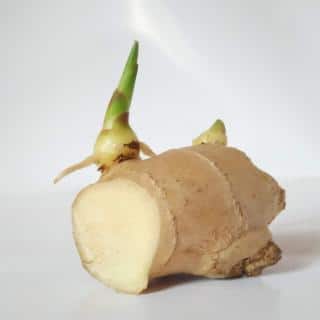 Half-dunk the rhizome in water. The other half must be able to breathe. A shallow tray is perfect for this.
Half-dunk the rhizome in water. The other half must be able to breathe. A shallow tray is perfect for this.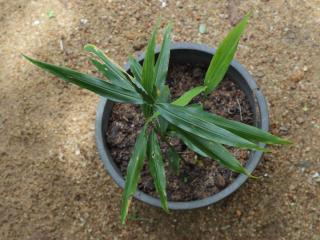 You can also go ahead and directly plant the ginger rhizome in a deep pot, at least 12 inches in diameter (30 cm).
You can also go ahead and directly plant the ginger rhizome in a deep pot, at least 12 inches in diameter (30 cm).
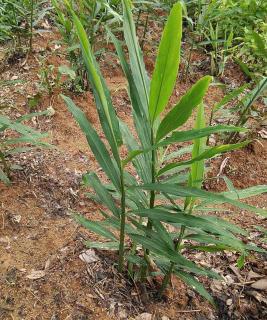 Ginger is a frost-sensitive plant needing warmth, especially during its growth period. It requires temperatures between 68 to 70°F (20 to 21°C) to thrive.
Ginger is a frost-sensitive plant needing warmth, especially during its growth period. It requires temperatures between 68 to 70°F (20 to 21°C) to thrive.
Zingiber officinale also needs a humid and sunny atmosphere, mimicking its tropical natural habitat. As such, keep the soil moist once you spot the first leaves. But before that, only water modestly to prevent rotting. Likewise, don’t let water sit in the saucer underneath the pot.
During the warmer months, place your pots outdoors in a bright spot but not direct sunlight. In winter, position your ginger plants in a greenhouse, a sunroom, or indoors near a window.
Ginger mainly fears overwatering and poorly draining soils which will inevitably lead to rhizome rot. This plant, however, generally has a good resistance to diseases.
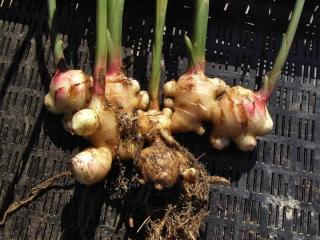 Harvest ginger rhizomes around 6 to 9 months after planting. It’s the end of a natural cycle when ginger leaves start to wilt.
Harvest ginger rhizomes around 6 to 9 months after planting. It’s the end of a natural cycle when ginger leaves start to wilt.
Store the tuber in an airtight container, cool and away from light. As time goes by, its zing intensifies. You can also freeze it.
Note that only roots harvested after two cycles (a year and a half) will be dense enough to retain their form. Young roots of the season will usually shrivel up somewhat if kept for too long.
Fresh ginger is excellent grated or chopped to flavor soups, stir-fries, fish, and curries.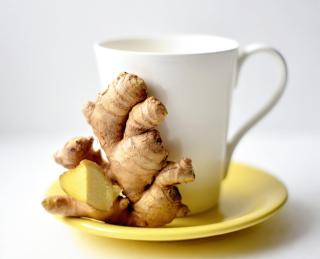
In candied form, this root becomes a spicy ingredient or a treat to enjoy on its own.
In powder form, it’s a popular addition to candies, pastries, and even breads.
Ginger infusion packs a punch for its therapeutic benefits. It aids digestion, soothes nausea, counters fatigue, boosts the immune system, and eases inflammation. Its close relative, turmeric, shares many similar benefits.
→ Learn more: